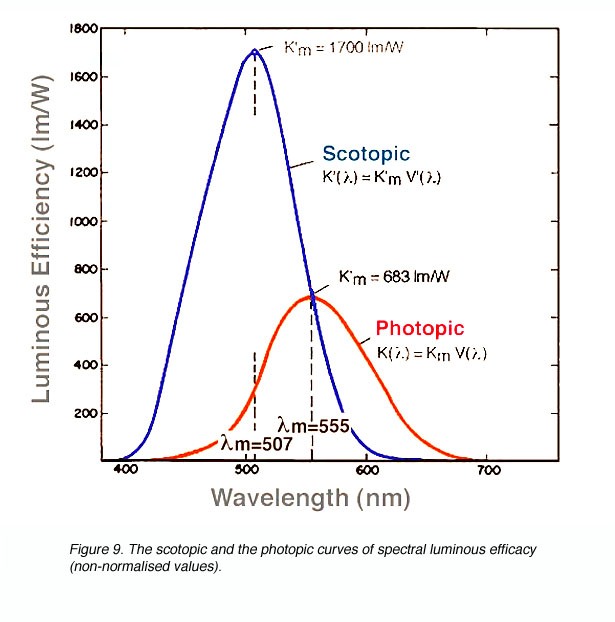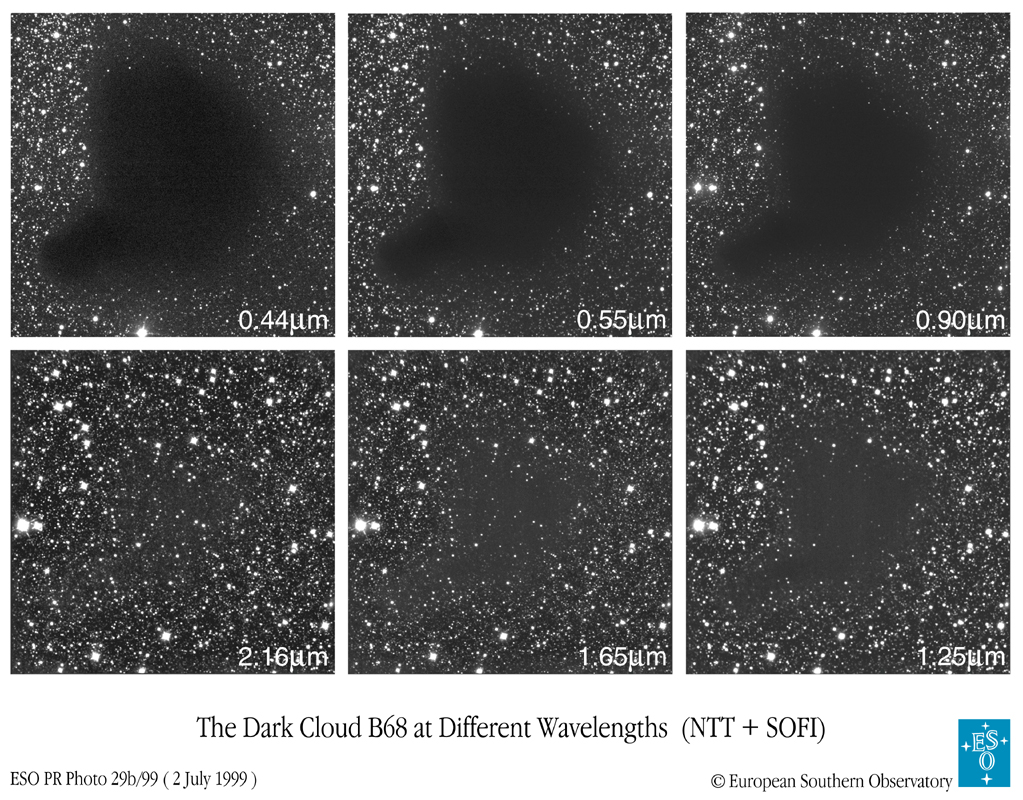![[eye response]](eye_spec_sens.jpg)
![[eye response]](eye_spec_sens.jpg)
![[eye response]](eye_response.gif)


![[ir bkgd]](ir_bkgd.jpg)
Mid-infrared images of people. Hot areas are brighter, cold areas are darker. Note the veins in the man's arm, which are hot, and the fact that his glasses completely opaque at mid-infrared wavelengths:
![[ir man]](ir_man.jpg)
![[cartheft seen in the infrared]](cartheft_infrared.gif)
![[infrared image of man on fence]](Man_on_Fence.jpg)
Infrared vs. optical view:
![[ir vis face]](ir_vis_face.jpg)
The transmission of the atmosphere for light of different near- and mid-infrared wavelengths defines the filter bands used for IR astronomy:
![[ir bands]](ir_bands.jpg)
A broader view of the transmission; note that there is essentially no transmission from 25 microns to about 350 microns:
![[ir trans full]](ir_trans_full.jpg)
Atmospheric transmission from the ground compared to that from a plane:
![[ir atmospheric transmission]](ir_atmos_trans.gif)
Extinction is much lower at infrared wavelengths than optical wavelengths:

The Orion Nebula star forming region, seen on left in visible light and on the right in infrared light:
![[orion nicmos]](trapezium_opt_ir.jpg)
The galactic center in optical vs. infrared:
![[galactic center optical vs ir]](gal_center_opt_ir.gif)
The Cone Nebula in optical (left) vs. infrared (right):
![[N2264]](N2264.jpg)
Next: infrared detectors and telescopes